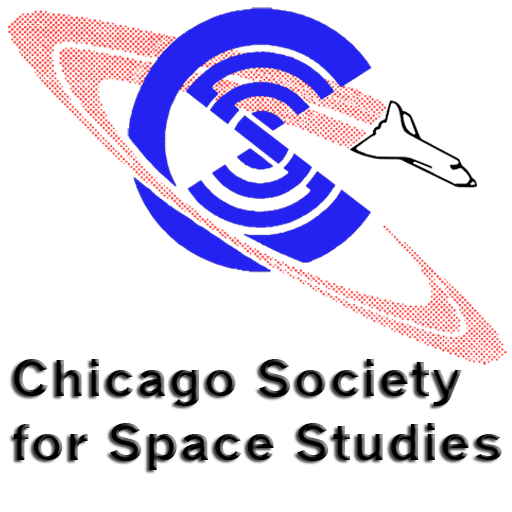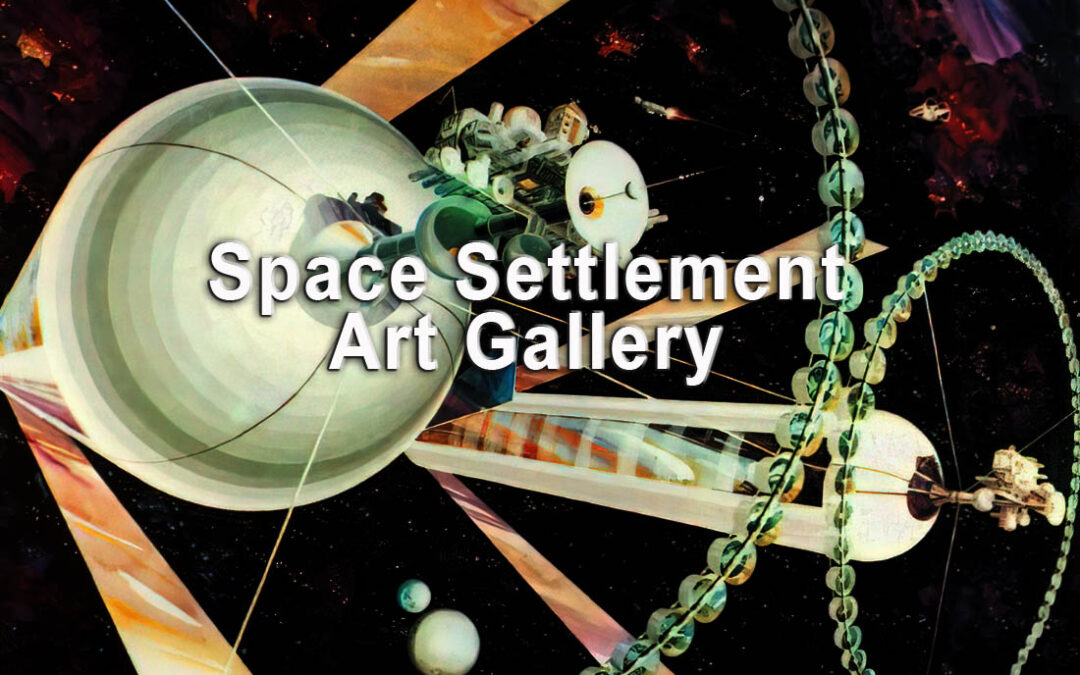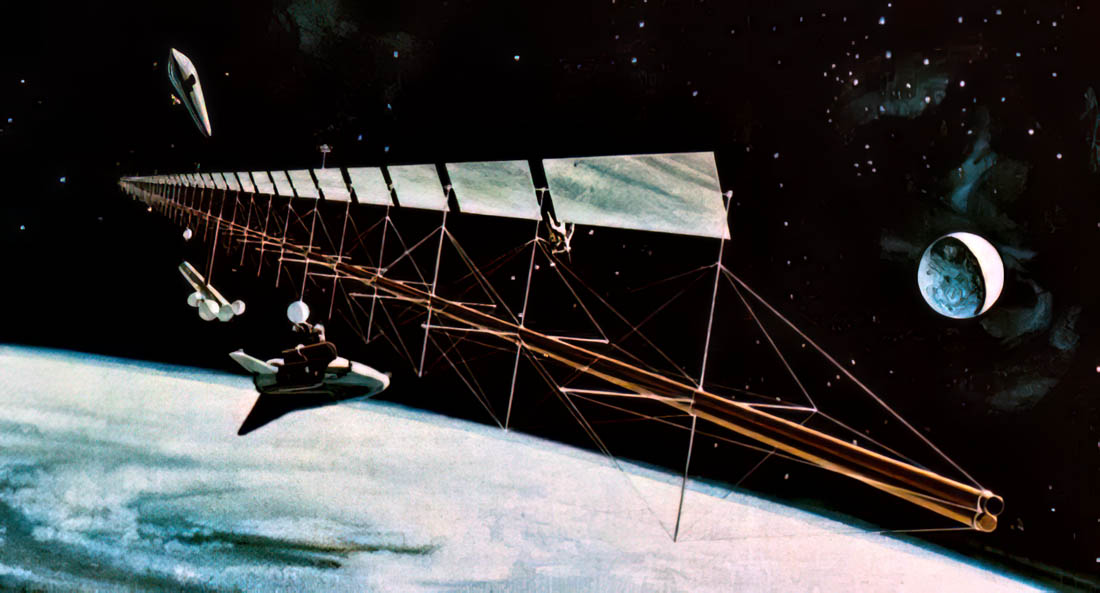
Illustration: A solar-powered mass-driver.
This is a solar-powered mass-driver, an electromagnetic linear accelerator. It can be utilized as a reaction engine which can use literally anything for fuel (even ground-up chunks of Space Shuttle External Tanks). The mass-driver has been assembled from components lifted by several shuttle flights, and soon will be ready to begin hauling cargo for a small moon base to lunar orbit.
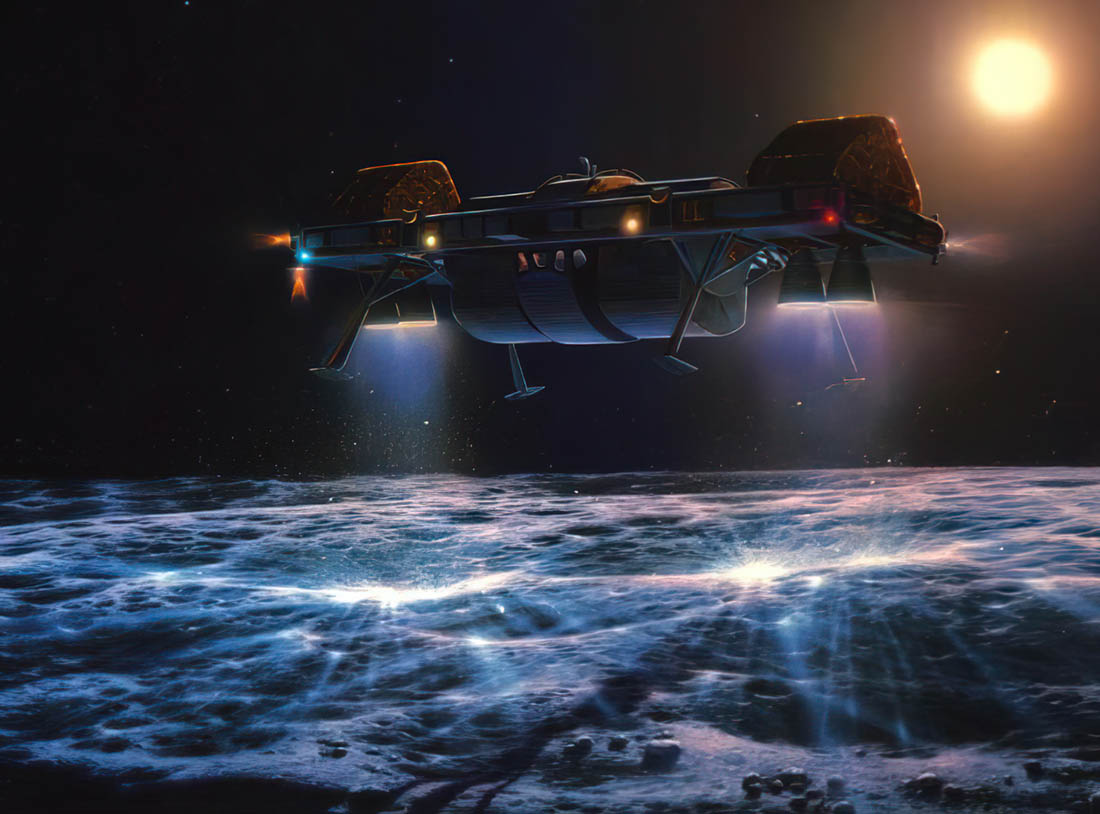
Illustration: Lunar Shuttle Soft-Landing Cargo At Moon Base.
Here, a lunar shuttle soft-lands cargo for the moon base onto the surface. The cargo includes small habitats, solar arrays, mining equipment, and components for the assembly of another mass-driver on the surface. This mass-driver will be used as a catapult to launch lunar ores to a point in space where they can be collected.
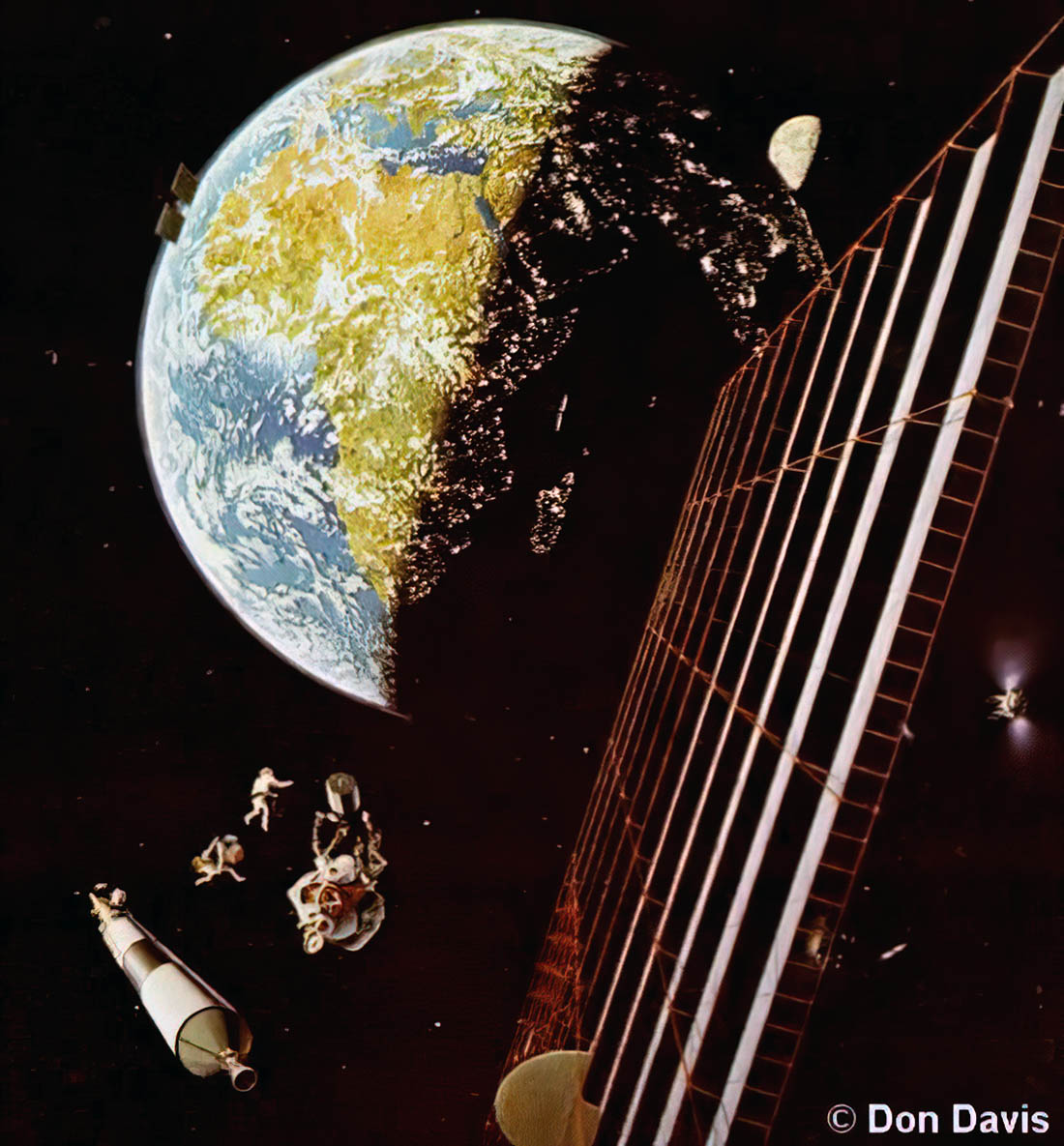
Illustration: A Solar Power Satellite by space artist Don Davis
A Solar Power Satellite (SPS) with a thoroughly-energized Earth in the background. One of the first things we will begin doing once we are using space resources is constructing a SPS, a vast solar array which gathers the constant solar power in orbit and beams energy to Earth in the form of a safe, low-density microwave beam.
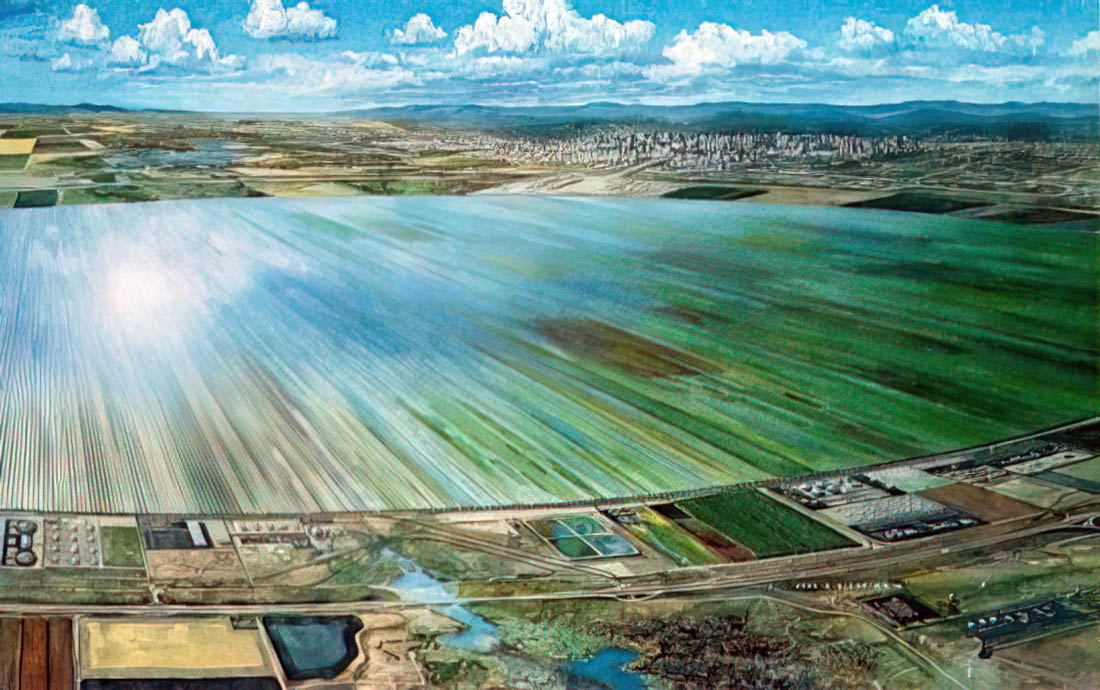
Illustration: Earth rectenna for solar power satellite energy reception
On Earth, the beam is intercepted by a rectenna several miles across, where it is converted back into electricity. The electricity is then rectified to AC, and fed into the power grid. The goal is to undersell power generated by fossil fuels or nuclear energy.
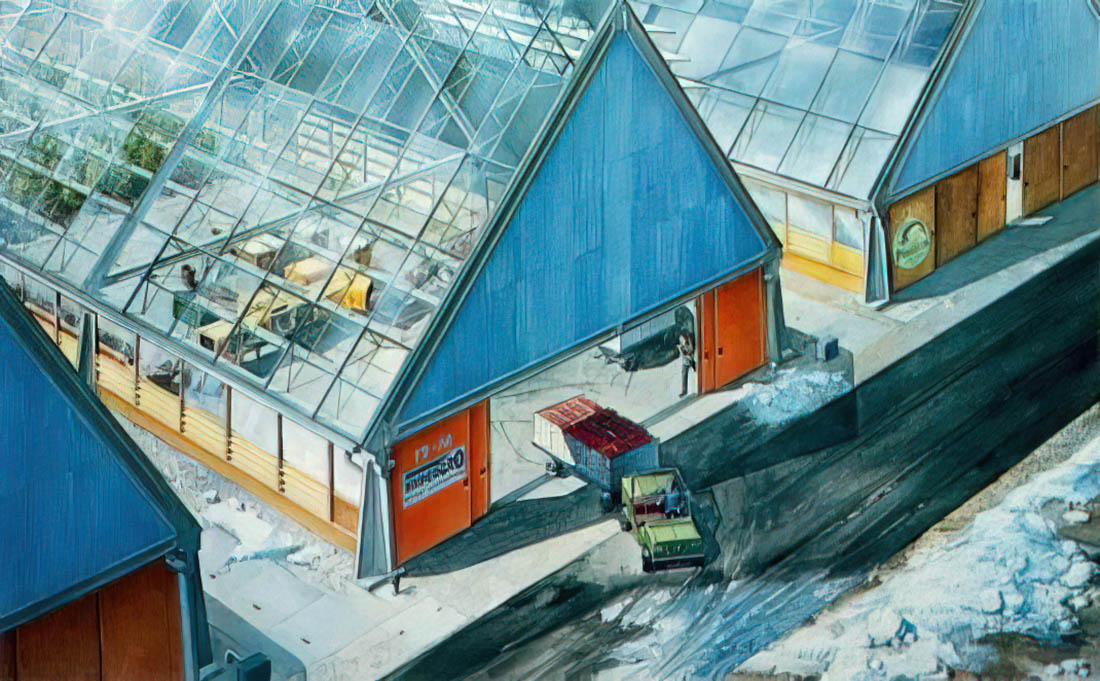
Illustration: Greenhouse Under A Solar Power Satellite Rectenna
The rectennas will be huge, but the land underneath need not go to waste. Since the array absorbs the microwaves, but allows sunlight and rainfall through, the land could be used for farming or ranching. Or, as in this case, the rectenna could be built as a vast set of greenhouses, feeding millions.
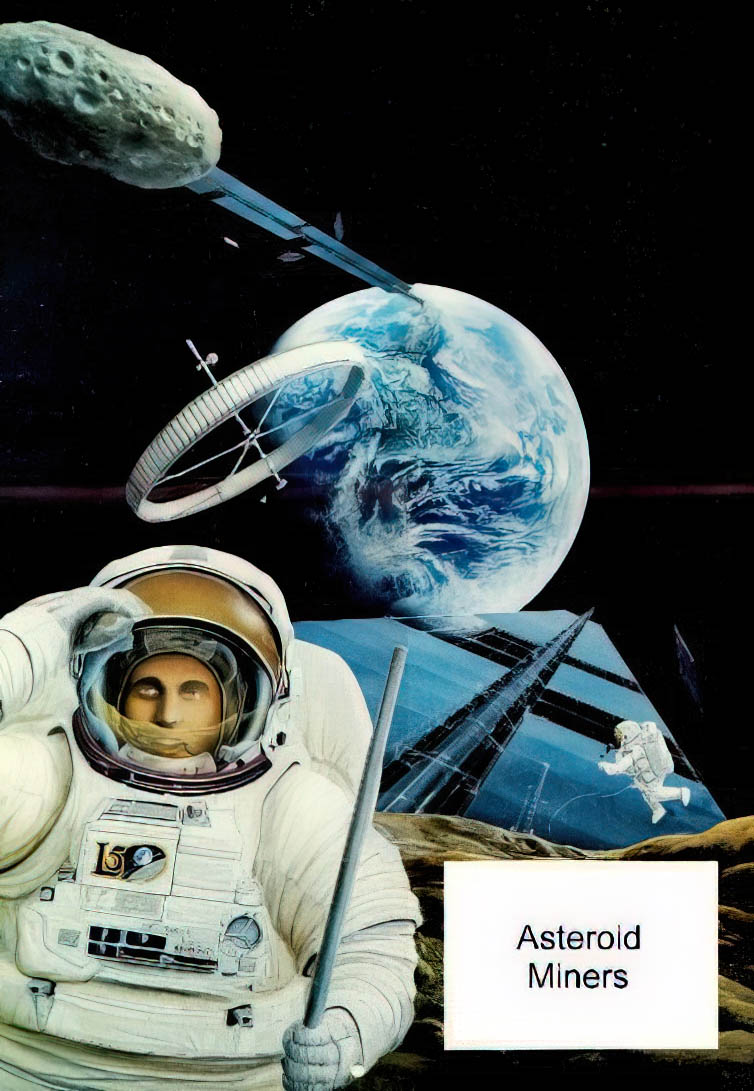
Illustration: Asteroid Mining And Mass Driver Engines For Propulsion
Here, a manned expedition to an Earth-approaching asteroid has set up a mass-driver engine. The mass-driver used chunks of asteroidal material as reaction mass to propel the asteroid to a stable High Earth Orbit where it can be mined for its minerals. Asteroids can provide vital elements which the Moon may lack, making orbital industries increasingly independent of Earth.
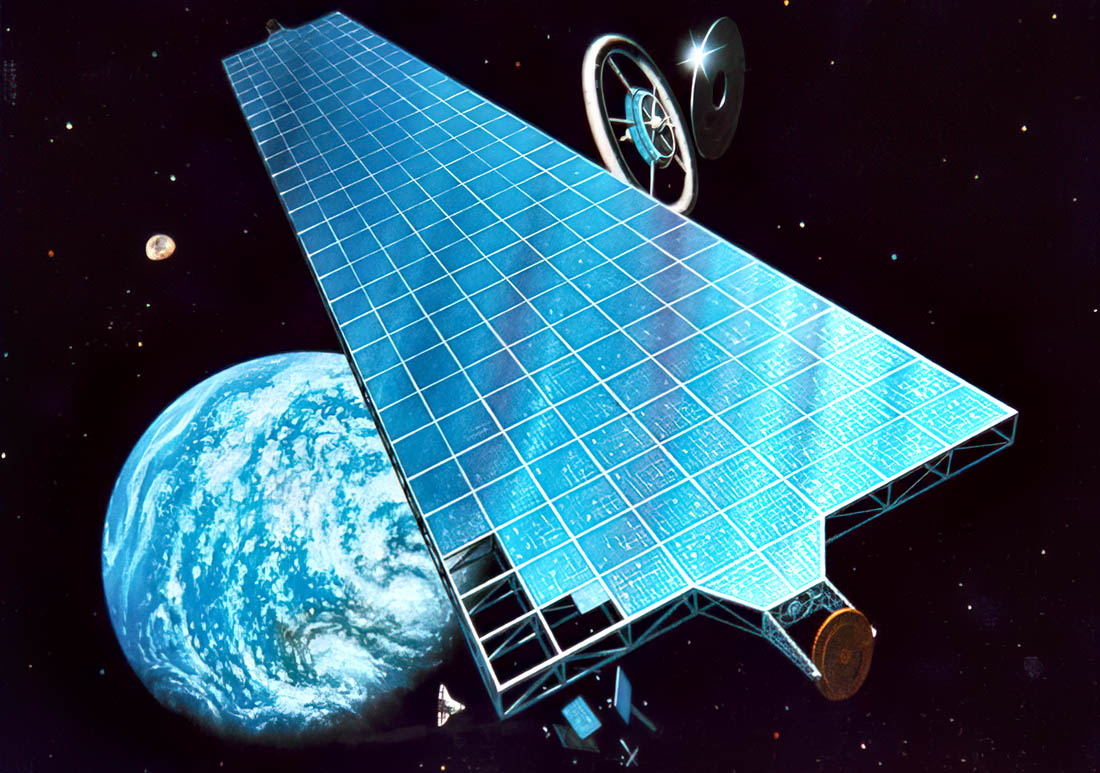
Illustration: SPS Sunsat in Earth Orbit with Stanford Torus Space Settlements
Once space industries have become profitable, it is likely that some of the industrial output will be turned to the task of building the first space settlement. Behind the SPS nearing completion is a Stanford Torus space habitat. It spins on its axis like a bicycle wheel so that centrifugal force can serve as an artificial gravity. ©David A Hardy, AstroArt
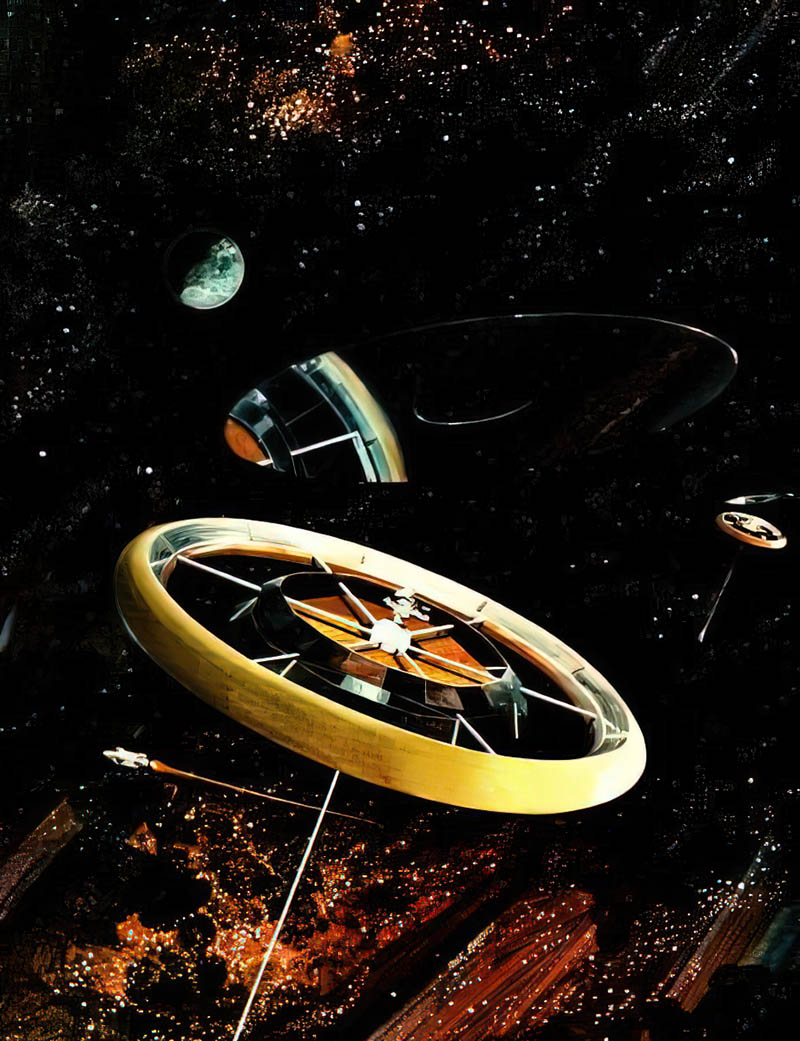
Illustration: Stanford Torus Space Settlement.
The habitat is solar-powered. The oval-shaped mirror above reflects sunlight down onto mirrors mounted on the spokes which in turn reflect it into the interior of the habitat. The long tunnel at the axis leads to a space factory.
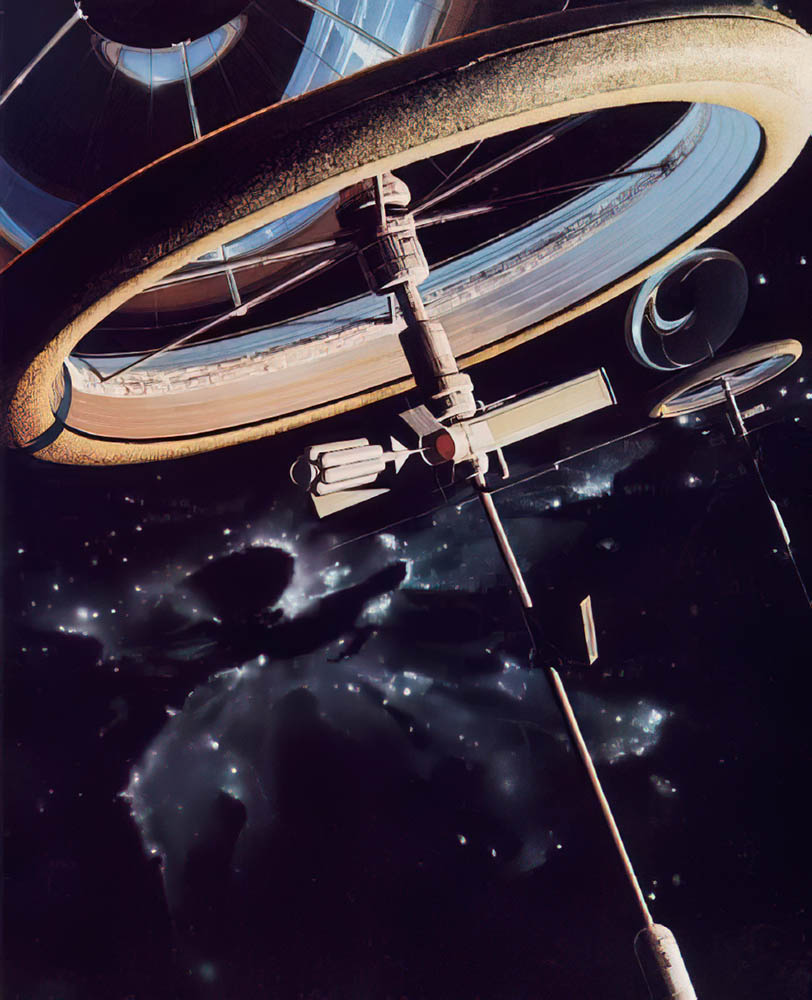
Illustration: Stanford Torus Space Settlement Close-Up
Here we can get a good view of the radiation shield surrounding the habitat. The shield is a non-rotating outer shell, and is composed of about six feet thickness of the slag left over from the ore-refining operation. This amount of shielding reduces the cosmic-ray radiation inside the habitat to levels no higher than those found in any Earthly community.Illustration by Syd Mead, Copyright Oblagon, Inc.
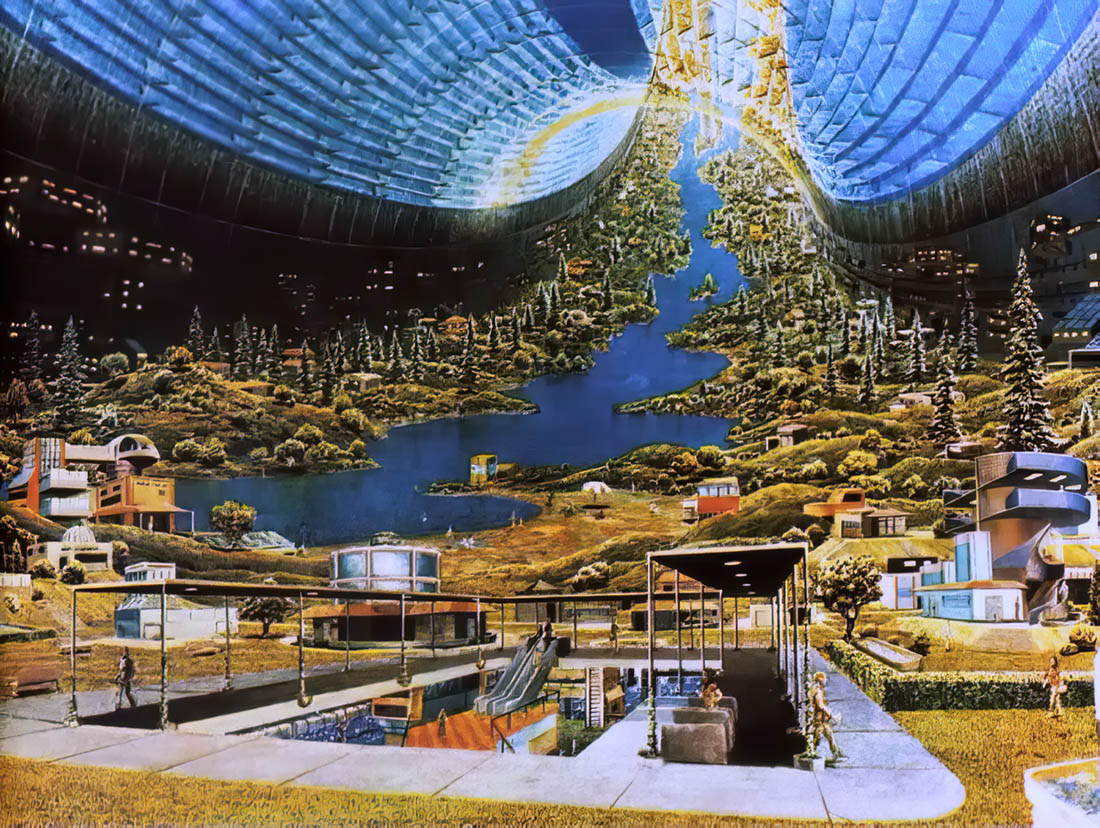
Illustration: Stanford Torus Space Settlement Interior Landscape
The interior of the habitat can be landscaped with lunar soil and planted. Those living in space need not be cut off from green growing things.
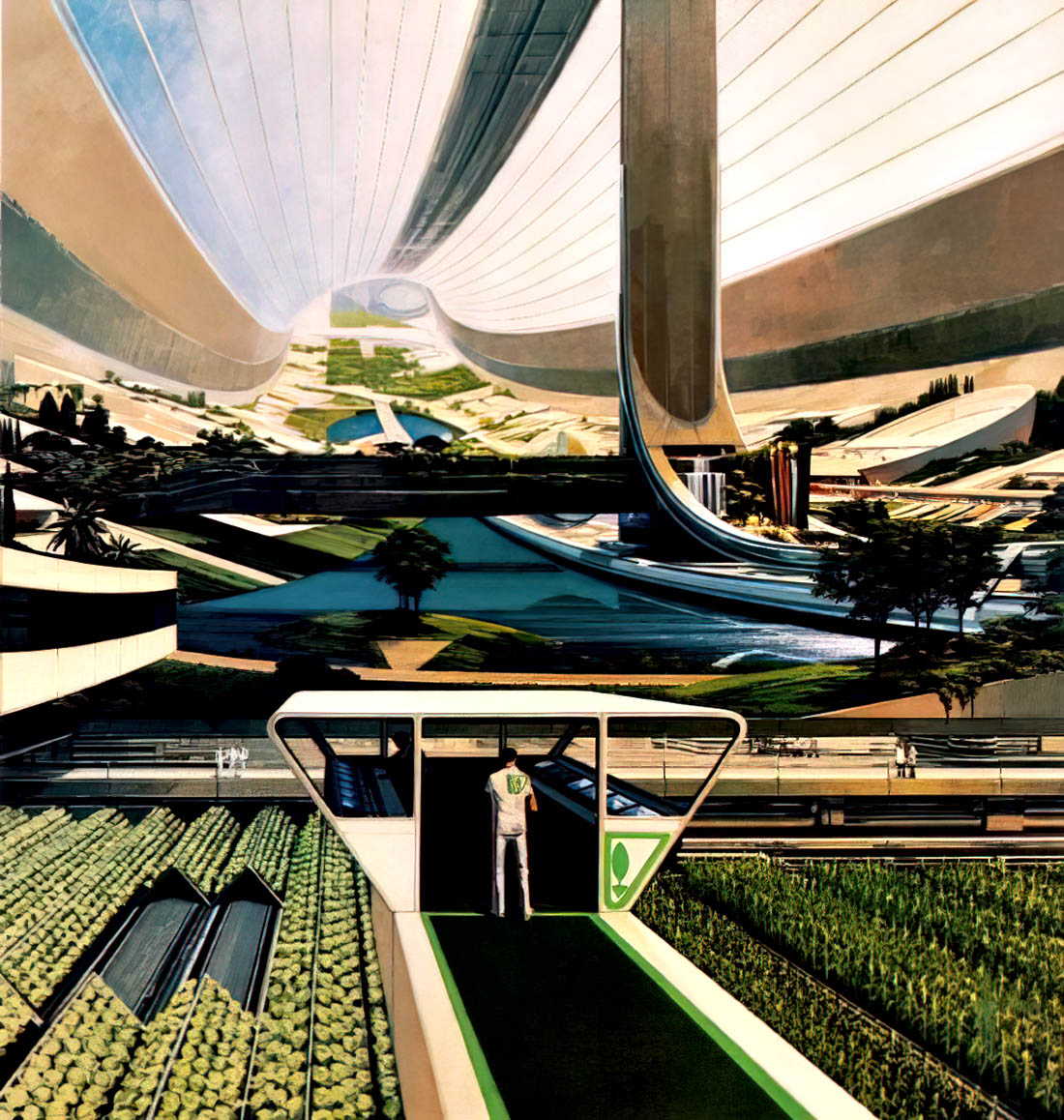
Illustration: Stanford Torus Agricultural Area
Technicians monitor crop yields in the agricultural area. The “growing season” in separate sections can be staggered, ensuring fresh fruits and vegetables for the space settlers year-round. Those crop plants which can tolerate 24-hour-a-day sunlight can have it. Agriculture in space will benefit greatly from weather control, and from the absence of pests. Illustration by Syd Mead, Copyright Oblagon, Inc.
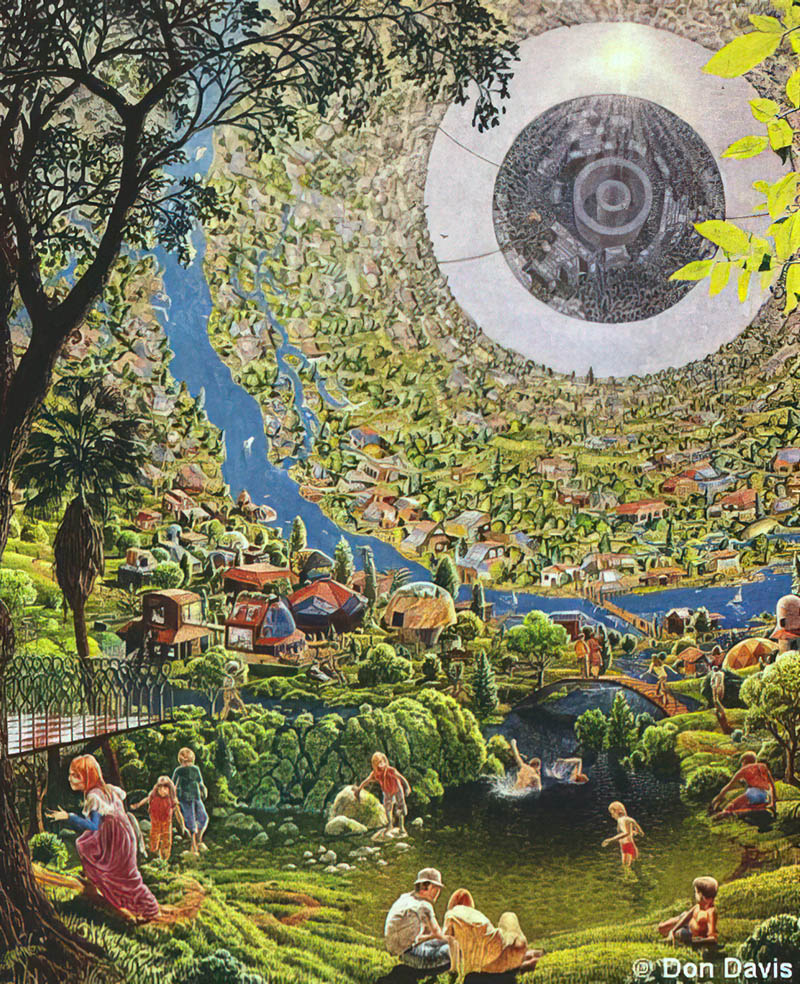
Illustration: Bernal Sphere Space Settlement Interior by Don Davis
Here is a Bernal Sphere. It’s about one mile in circumference. An individual could climb up to the axis of the habitat (where the gravity would be essentially zero) and enjoy personal flight.
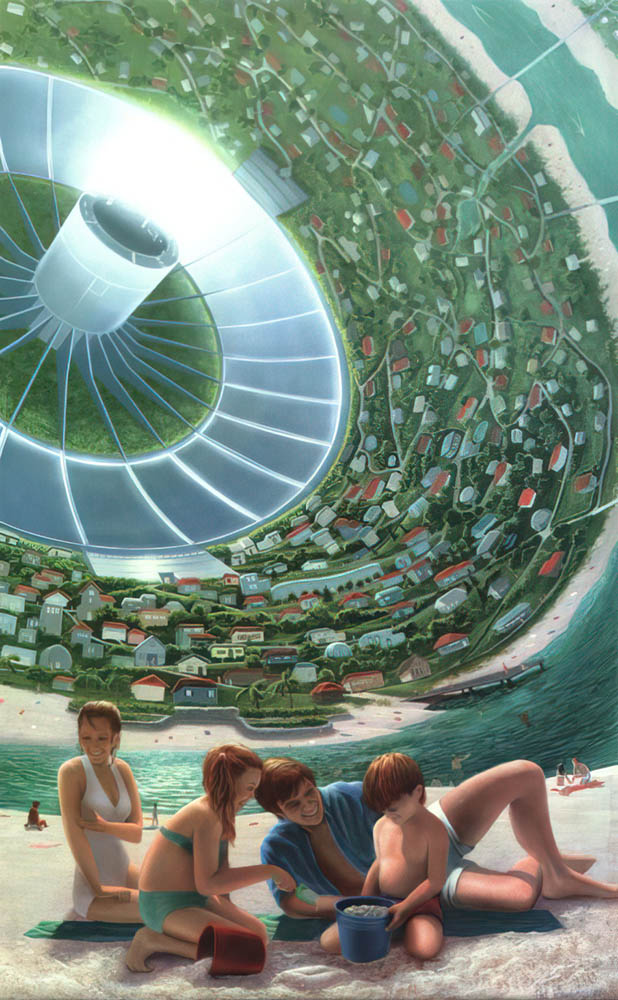
Illustration: Family recreation in a Bernal Sphere Space Settlement
With abundant sunlight freely available, climates comparable to those of Hawaii or Southern California would be possible. With the right kind of engineering and landscaping, most of the recreational activities we enjoy here on Earth should be possible in space settlements.
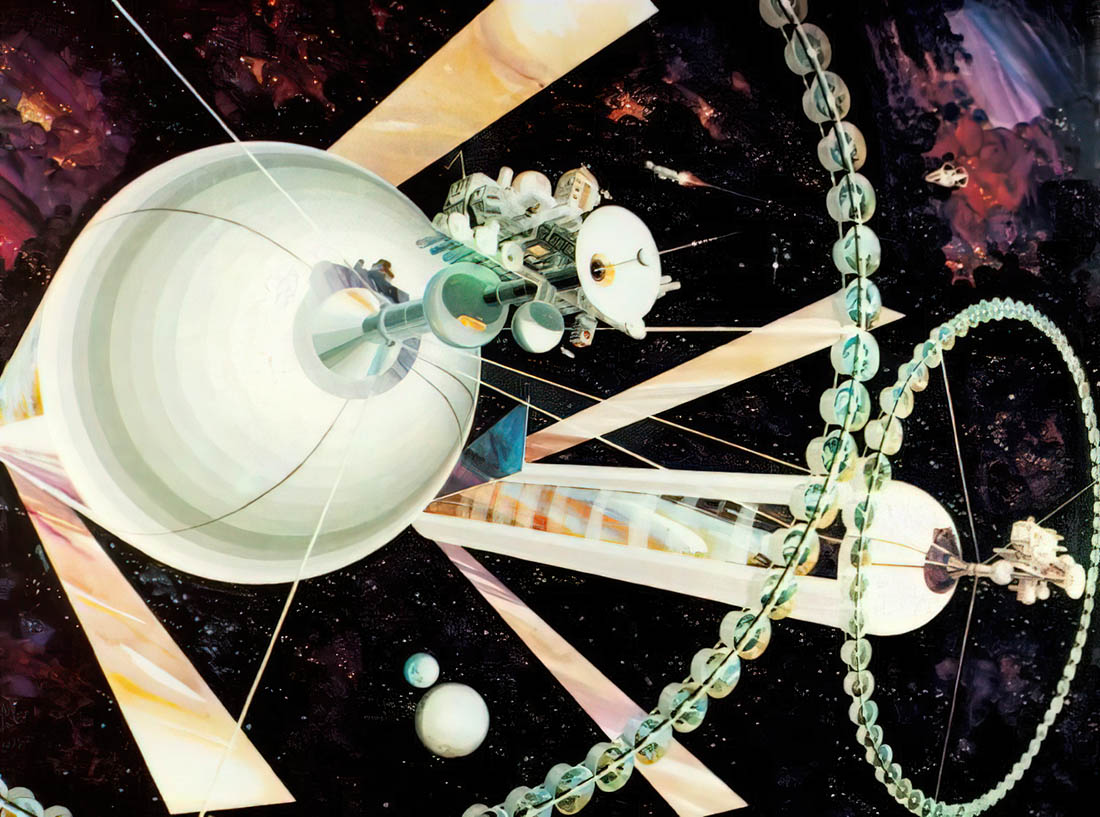
Illustration: O’Neill Cylinder Space Settlement Exterior View
This is among the largest of the space habitat designs, the O’Neill Cylinder. Each cylinder is four miles in diameter and twenty miles long. The ring-shaped structures are for agriculture.
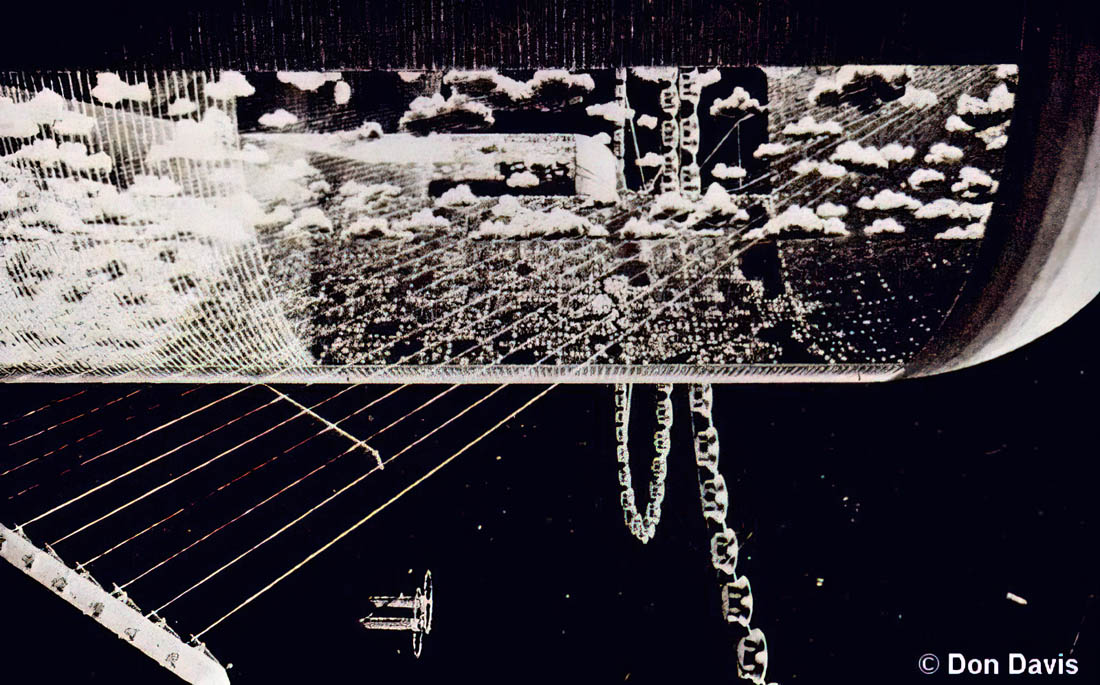
Illustration: O’Neill Cylinder Space Settlement View By Don Davis
A view through one of the three windows of the habitat. Four miles of atmosphere is sufficient depth to result in blue skies overhead. Cloud banks would form at the same level they do on Earth, and there would be natural rainfall.
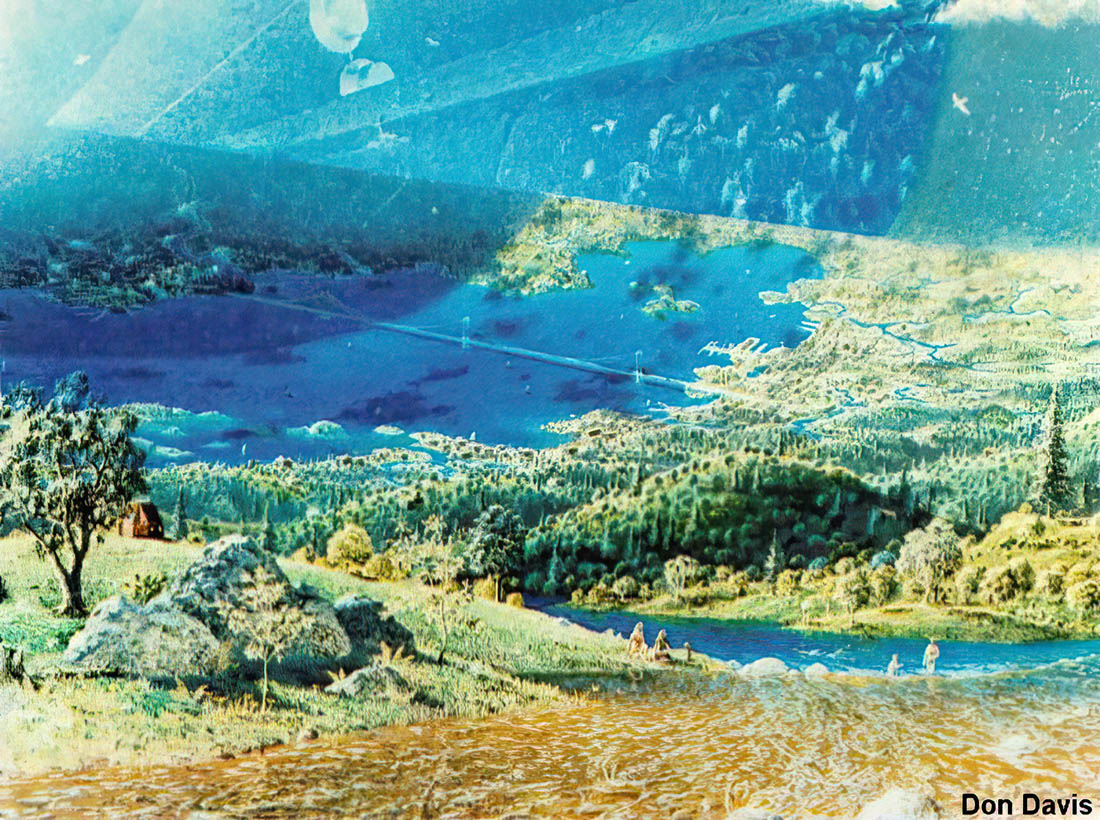
Illustration: O’Neill Cylinder Space Settlement Scenic View By Don Davis
The inhabitants of an O’Neill Cylinder would live in one of three valleys. The suspension bridge in this illustration is the same size as the Golden Gate Bridge in San Francisco.
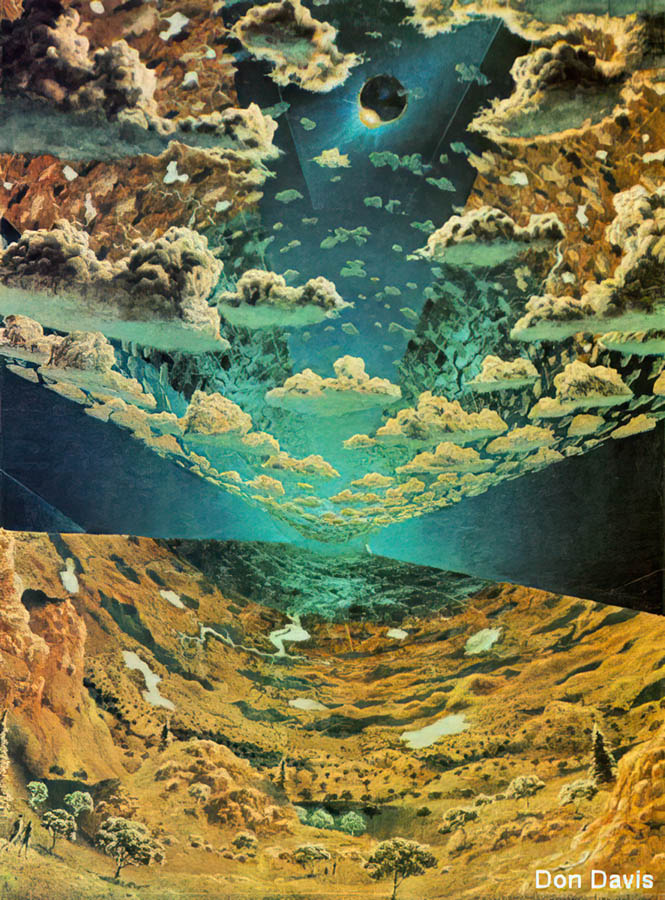
Illustration: A Solar Eclipse Seen From An O’Neill Cylinder Space Settlement
Space settlers witness a rare event: the eclipsing of the sun by the Earth. This would be an uncommon occurrence. In a sufficiently-high Earth orbit, a habitat would be in continuous sunlight well over 99% of the time, much to the benefit of its solar-powered industries and electrical utilities. As solar power in space is a constant, reliable source of cheap, clean energy, the standard of living in the orbital settlements is expected to be correspondingly high.
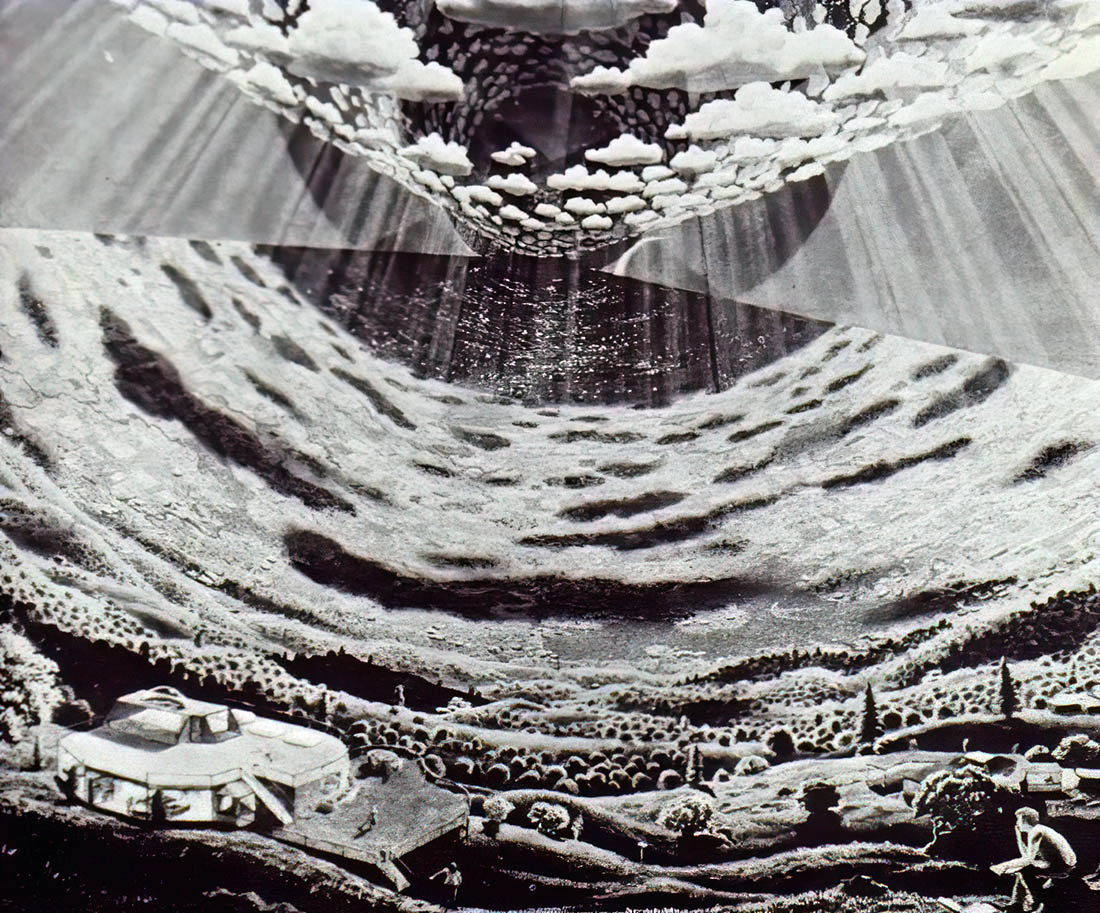
Illustration: O’Neill Cylinder Space Settlement Cloudscape
The mirrors shift to bring the fall of night to a space habitat. Pity the poor artist at the lower right. He just can’t seem to get inspired. There’s nothing particularly extraordinary about the scenery!
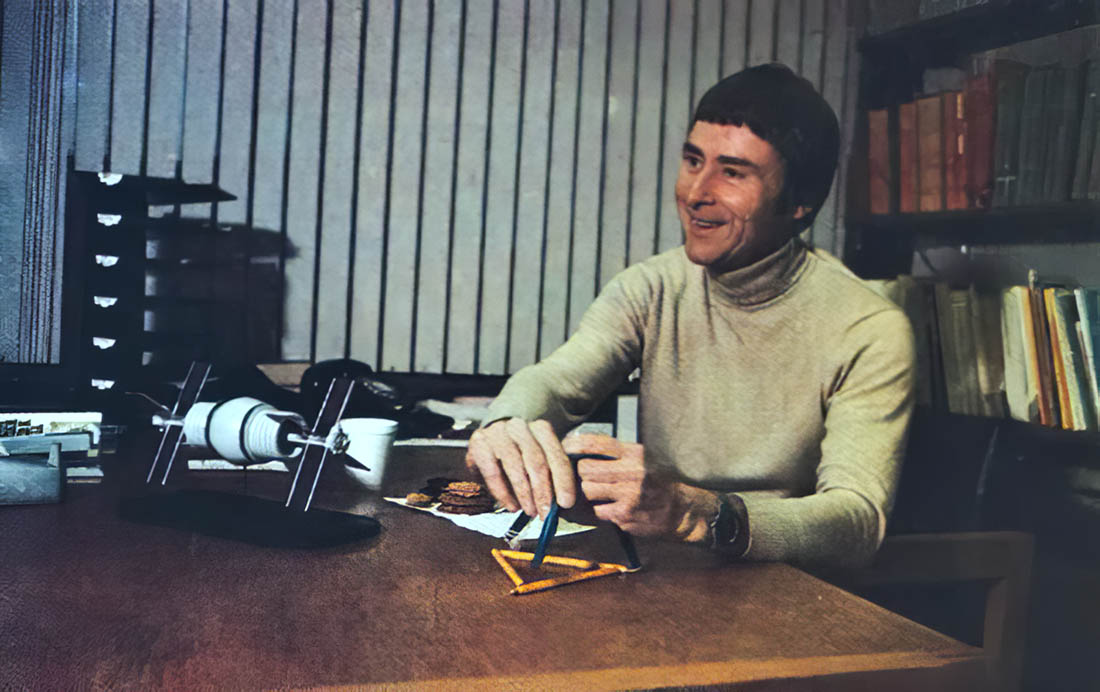
Illustration: Gerard K. O’Neill with Bernal Sphere Space Settlement Model
Gerard K. O’Neill, father of the space settlement concept. The model on the desk is a Bernal Sphere, minus the mirrors.
What the heck is he doing with those pens?
Return to Mike Combs Space Settlement Collection Index
This content is a part of the Mike Combs Space Settlement collection and is provided as a courtesy of the Chicago Society for Space Studies and Mike Combs.
